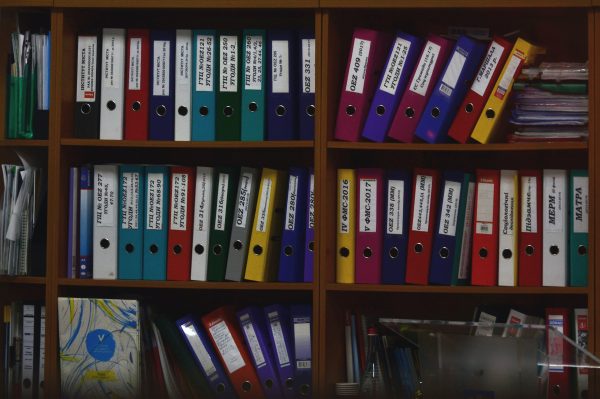Ever wondered how you can better track your student’s progress? As educators, we understand it’s essential. Tracking progress helps us pinpoint strengths, weaknesses, and learning gaps, enabling us to provide targeted support and enhance overall academic achievement. In today’s fast-paced educational world, staying on top of our student’s growth is more important than ever. But how can we do this effectively?
This blog post is here to guide you. We’ll explore practical and effective ideas to monitor your elementary students’ progress. So let’s dive in and uncover the world of student progress tracking together.
Ideas for Tracking Student Progress
Establishing Learning Goals and Objectives
What’s the first step in tracking student progress? Establishing clear learning goals and objectives. We create a roadmap for our student’s success by setting well-defined targets. But how can we ensure these objectives are practical? It’s time to explore the SMART goals.
SMART objectives are Specific, Measurable, Achievable, Relevant, and Time-bound. This framework can create specific, trackable purposes for your student’s needs. Remember to align these goals with your curriculum standards, as it’s essential for consistency and meeting learning benchmarks.
Consider involving your students in the goal-setting process. You’ll foster a sense of ownership and motivation by including them in discussions and allowing them to contribute to setting their learning targets. Students are more likely to strive for success when they are part of the process.
Utilizing Formative Assessment Tools
Looking for ways to keep a pulse on your student’s progress? Say hello to formative assessments. These powerful tools offer real-time insights into how well your students grasp concepts, allowing you to adjust your teaching strategies as needed. But what exactly are the benefits of formative assessments?
Formative assessments promote continuous learning and improvement by identifying gaps in understanding and providing immediate feedback. They also help students develop self-assessment skills and foster a growth mindset. Here are some engaging examples to try:
- Exit Tickets: Quick, end-of-lesson check-ins that gauge students’ understanding of the day’s material.
- Quiz Games: Fun, interactive games (like Kahoot) that review key concepts in a competitive format.
- Classroom Polls: Instant polls that allow students to share their thoughts or answer questions anonymously.
To make the most of these tools, remember these tips for effective implementation:
- Keep assessments short and focused.
- Use a variety of formats to maintain student interest.
- Provide timely feedback and follow-up.
Creating a Progress Monitoring System

As we delve deeper into tracking student progress, it’s essential to have an efficient progress monitoring system in place. But how do you choose the right tracking tool? Let’s explore some popular methods to find the best fit for your classroom.
- Physical charts and binders: Some teachers prefer traditional methods, such as charts and binders, to keep track of student progress. You can easily customize these tools to suit your needs and provide a tangible way to visualize progress.
- Digital tools and applications: For those who prefer a tech-savvy approach, numerous digital tools and applications are available to help track progress. Online platforms (such as Google Classroom or Seesaw) can provide real-time updates, easy access to data, and seamless communication between teachers, students, and parents.
Once you’ve chosen your tracking tool, updating and reviewing progress regularly is vital. Consistently monitoring your students’ growth allows you to identify trends, celebrate successes, and address challenges promptly.
Finally, use the data collected through your progress monitoring system to adjust your teaching strategies. By adapting your approach based on student performance, you can provide targeted support and create an individualized learning experience that fosters success.
Engaging Parents in the Process
An essential component of tracking student progress is involving parents in the process. By fostering solid parent-teacher relationships, you create a support network that empowers students to succeed in and out of the classroom. So how can you effectively engage parents in their child’s learning journey?
- Communicate student progress regularly: Keep parents informed about their child’s progress by sharing updates and insights. Regular communication through emails, newsletters, or online portals can help parents stay connected and feel involved.
- Improve parent-teacher communication: To make communication with parents more impactful, consider being transparent and honest about students’ strengths and areas for improvement, encourage open dialogue and listen to parents’ concerns and suggestions, and offer practical ideas on how parents can support their child’s learning at home.
- Encourage parents to support learning at home: Reinforcing learning outside the classroom is crucial for student success. Share resources, strategies, and activities for parents to help their child practice skills and deepen their understanding of concepts.
Empower Students Through Progress Tracking
As we wrap up our exploration of tracking student progress, we’ve covered essential aspects such as establishing SMART goals, utilizing formative assessment tools, creating an efficient progress monitoring system, and engaging parents.
Implementing these strategies unlocks the value of tracking student progress, allowing you to provide targeted support, adapt your teaching strategies, and create a tailored learning environment. Embrace and integrate these ideas into your teaching practice to support your student’s growth and enhance your effectiveness as an educator.
By the way, we have a fantastic way to improve your students’ typing skills while also tracking their typing skill progress. It’s all possible with the typing programs we offer at KeyboardingOnline. Our platform provides engaging lessons and activities that promote typing proficiency, and our progress-tracking features make it easy to monitor student improvement. Give it a try and discover how KeyboardingOnline can elevate your students’ typing abilities and support their academic success.
